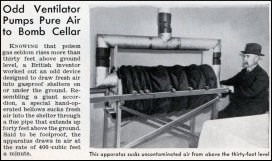A spokesperson for Ontario's Ministry of the Environment says that its air quality index is not designed to provide localized readings.
"They're not designed to look at a specific source," says John Steele. "They're designed really to give an overall look at regional air quality."
"They're deliberately put away from sources of air pollution," Steele told SooToday.com
In a telephone interview, Steele was responding to this week's report by Ontario's Environmental Commissioner Gord Miller, which was sharply critical of Ontario's air quality monitoring system.
Steele talked about street-level monitoring system pilot projects that have been underway in Ottawa and Halton for about a year now.
He talked about other communities, but didn't have much to say specifically about Sault Ste. Marie.
"We've assisted, for a couple of years now, the City of Toronto in health-based air quality monitoring," Steele said. "What the City of Toronto wants to do is combine all six containment measurements in a health-based advisory."
In any region, including Sault Ste. Marie, the ministry can and has issued health advisories because of poor air quality readings.
But they've done it based on individual contaminents such as ozone or fine particulate matter, not by looking at a cumulative effect of contaminants together.
Air quality monitoring stations across the province are set up to only issue a reading on whichever of the six contaminants measured happens to be highest at the time.
This means that, if ozone is high but fine particulate matter is only slightly less high, the air quality monitoring station will give data only for ozone.
Miller, the environmental commissioner, says that as a result, people across the province are getting a false sense of security that may be endangering their health.
Maybe even their lives.
He says that viewing any single data set without the context of the environment in which that data was gathered is dangerous because it ignores the cumulative effects of pollution.
And that weakness is further combined with Ontario's habit of placing monitoring equipment far from pollution sources, Miller said.
Steele says it will take a while longer to see whether the alternative systems being tested in Ottawa, Halton and Toronto are going to yield viable data and whether those systems can be transfered to other locations.
It could take another year or two of collecting data.
Then, additional time will be needed to analyze that data and reach a determination.
So don't expect to see a system in place in Sault Ste. Marie anytime soon that tells people how bad the air is at street level.
The inadequacies of the province's air quality monitoring system come as no surprise to many people in Sault Ste. Marie, where a grassroots movement has been trying to improve air quality, particularly in the West End neighbourhood of Bayview, for several years.
That's one reason Miller came to Sault Ste. Marie this past summer.
Sault MPP Tony Martin has been involved as well, almost from day one.
Today, Martin released his own statement, supporting Miller's report and calling for more resources devoted to monitoring street-level air quality.
But Steele says the ministry can never have enough resources.
Really, he says, no one can.
"It's always difficult to answer that particular question because it depends on a point in time," Steele said. "If the economy improves then you're going to have more and more industry putting out more and more contamination - more and more pollution and you have problems with that."
"But if you look at it now with the economy in decline, and very much in decline [you'll see] our resources go up and down based on the economy," he said. "The more money that comes into the treasury of Ontario, then the more money we will get. With more concerns that the public have and more money available, certainly we'll get more money."
Steele said that, in any case, there's a limit to how much money can be spent.
"I think we do the best we can with the resources that we do have," he said. "I think we do a reasonably good job."
Steele said Miller's reports are always helpful to the ministry.
"It allows someone to give us a third-party look at what the ministry does," said Steele.
The ministry is looking at its air quality monitoring system now, as a result of Miller's report.
"We're looking at ways we can improve our regional air quality monitoring system and have it more regional," he said. "And we're also looking at ways we can monitor it at street level."
But Steele believes the real solution to Ontario's environmental problems can be solved by replacing its ageing infrastructures like bypassed sewers and outdated landfills.
************************* Earlier SooToday.com coverage of this story
